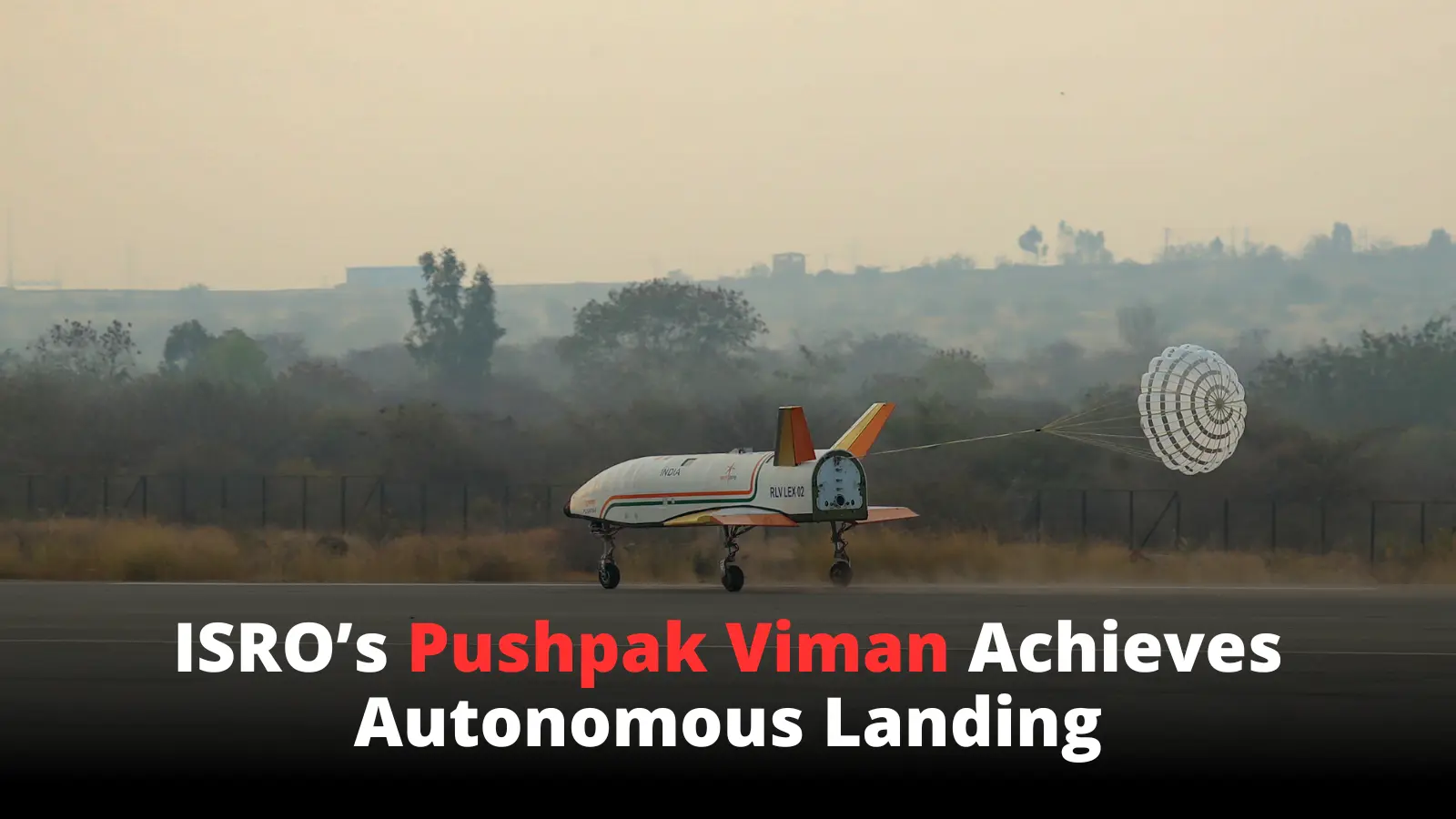In a groundbreaking achievement, India’s space agency, the Indian Space Research Organisation (ISRO), successfully conducted an autonomous landing experiment with its reusable launch vehicle, affectionately named “Pushpak Viman.” Let’s delve into the details of this remarkable feat:
Table of Contents
1. The RLV LEX-02 Mission
- The RLV LEX-02 mission aimed to demonstrate the autonomous landing capability of the reusable launch vehicle.
- The vehicle was released from an Indian Air Force Chinook helicopter at an altitude of 4.5 kilometers—a challenging initial condition.
- The critical test was whether Pushpak Viman could autonomously approach the runway and execute a precise landing.
2. Autonomous Landing: How It Happened
- Cross-Range Corrections: Pushpak Viman dynamically adjusted its trajectory during descent, compensating for any lateral deviations.
- Precision Landing: The vehicle touched down with remarkable accuracy, showcasing its ability to land safely.
- Brake Parachute: To slow down, Pushpak Viman deployed a brake parachute, ensuring a controlled descent.
- Landing Gear Brakes and Nose Wheel Steering: These systems worked seamlessly to bring the vehicle to a complete stop.
@isro Launched Pushpak 'Viman', India's future reusable launch vehicle. ISRO also shared the video of approach and landing of RLV-LEX-02 on social media.#ISRO #Pushpak #RLVLEX02Mission pic.twitter.com/t44OKMAE3f
— Asianet Newsable (@AsianetNewsEN) March 22, 2024
3. Significance of Pushpak Viman’s Success
- Cost-Effective Space Access: Reusable launch vehicles significantly reduce the cost of accessing space, making it more sustainable.
- Technological Leap: India joins an elite group of nations capable of autonomous landings, enhancing its space capabilities.
- Environmental Impact: Reusability reduces space debris and minimizes the ecological footprint of space missions.
What’s Next?
- ISRO plans to refine and expand the capabilities of reusable launch vehicles, opening doors to exciting space missions.
- Keep an eye on the skies—India’s journey to the stars continues!
Remember, every successful landing of Pushpak Viman brings us closer to the cosmos. Let’s celebrate this achievement together and look forward to more stellar moments in India’s space odyssey.
Disclaimer: The information provided is based on available reports. For official updates, visit [ISRO’s website].

